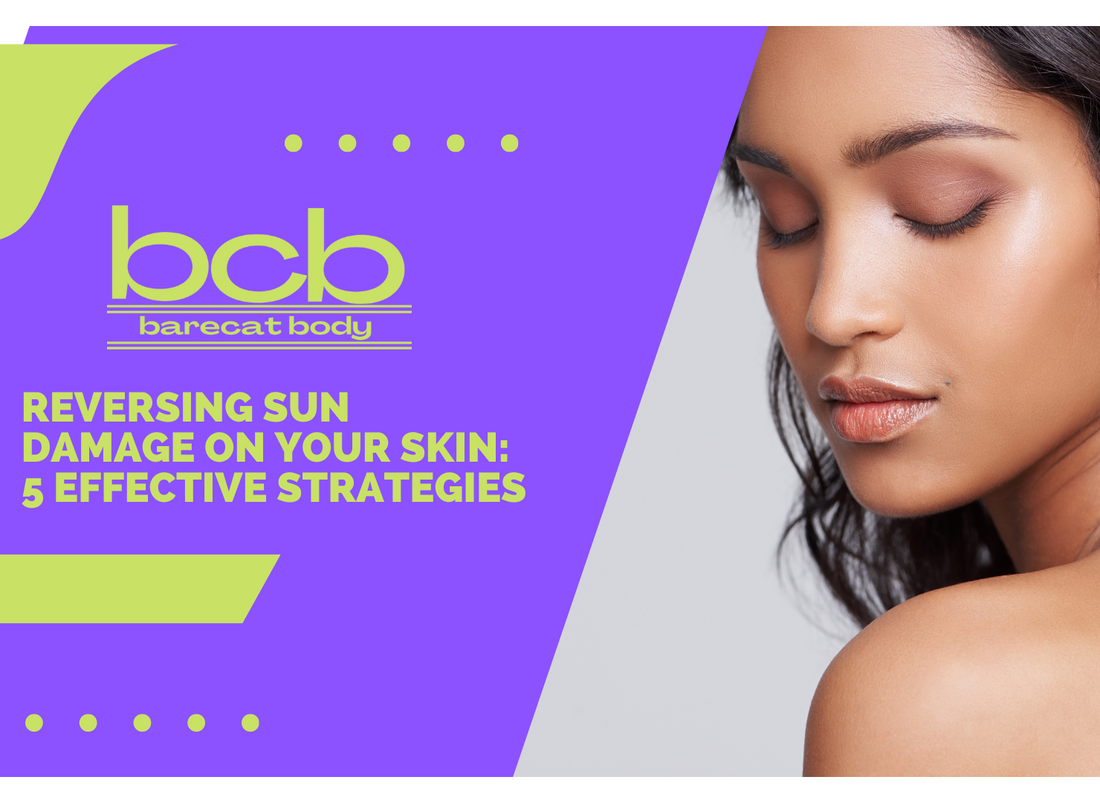It's not easy but with great products and consistency below is what you want to do to reverse sun damage on your skin.
We all love soaking up the sun, but prolonged exposure to harmful UV rays can take a toll on our skin. Sun damage, characterized by dark spots, uneven skin tone, wrinkles, and dryness, can leave us yearning for a way to reverse its effects. Fortunately, there are several strategies you can adopt to rejuvenate and repair your skin. In this article, we will explore five effective ways to reverse sun damage and restore your skin's natural radiance.
- Embrace the Power of Sunscreen:
Prevention is key when it comes to sun damage reversal. Before diving into remedies, it's crucial to protect your skin from further harm. Make sunscreen a non-negotiable part of your daily skincare routine. Opt for a broad-spectrum sunscreen with a high SPF (sun protection factor), applying it generously to all exposed areas. Sunscreen creates a barrier between your skin and harmful UV rays, reducing the risk of further damage and allowing your skin to heal.
- Incorporate Antioxidants into Your Skincare:
To combat the effects of sun damage, antioxidants are your skin's best friends. These powerful compounds help neutralize free radicals, which are unstable molecules that contribute to skin aging. Look for skincare products containing ingredients like vitamin C, green tea extract, resveratrol, and niacinamide. These antioxidants promote collagen synthesis, fade dark spots, and improve overall skin texture, helping to reverse sun damage over time.
- Exfoliate Regularly:
Exfoliation plays a crucial role in reversing sun damage by removing dead skin cells and revealing fresh, healthy skin underneath. Incorporate gentle exfoliation into your skincare routine to improve skin texture and promote cell turnover. Avoid harsh scrubs that can further irritate sun-damaged skin and opt for chemical exfoliants containing alpha-hydroxy acids (AHAs) or beta-hydroxy acids (BHAs). These exfoliants gently dissolve dead skin cells and help fade hyperpigmentation, leaving your skin looking brighter and more even-toned.
- Hydrate and Nourish Your Skin:
Sun damage often leads to dry, dehydrated skin, so it's crucial to replenish moisture and nourish your skin. Incorporate a hydrating serum or moisturizer into your routine, preferably one that contains hyaluronic acid or polyglutamic acid (PGA) to provide deep hydration. These ingredients help plump the skin, reduce the appearance of fine lines and wrinkles, and restore a youthful glow. Additionally, consider incorporating face masks and facial oils rich in antioxidants and essential fatty acids to replenish and revitalize your skin.
- Seek Professional Treatments:
If you're dealing with severe sun damage, it's worth considering professional treatments for targeted and faster results. Consult a dermatologist or skincare professional who can recommend suitable treatments based on your specific needs. Popular options include laser therapy, chemical peels, microdermabrasion, and photofacials, which can effectively address hyperpigmentation, wrinkles, and uneven skin tone. These treatments work by stimulating collagen production and promoting cell turnover, resulting in smoother, more youthful-looking skin.
Conclusion:
Sun damage is a common concern for many, but with the right approach, it is possible to reverse its effects and restore your skin's health and radiance. Remember to prioritize sun protection by using sunscreen daily, even on cloudy days. Incorporate antioxidants, exfoliation, and hydration into your skincare routine to repair and rejuvenate your skin. Consider seeking professional treatments for more advanced sun damage. By following these strategies consistently, you'll be on your way to reversing sun damage and embracing a healthier, more vibrant complexion.

